Star Trek: Discovery – Dead Endless
Written by Dave Galanter
“But if I’m not dead, why am I stuck here for eternity?”
“Is that what dead is? Being ‘stuck’ somewhere, forever?” The question was sincere.
The human caustically chuckled. “Some people think so. I never did.”
“Then what is death to you? And why do some people think it is a forever place? Is ‘dead’ endless?”
Dave Galanter’s brand-new Star Trek: Discovery tie-in novel, Dead Endless focuses on the relationship between Paul Stamets and Hugh Culber. In the process, Galanter delightfully explores some other Discovery characters, providing some much-needed depth, and gives us an interesting first contact scenario that unfolds in ways I’ve never seen in Star Trek before.
My non-spoiler review is this: The book starts out deeply fascinating, and the more insanely detailed Trek fan you are, the more fascinating (and maybe infuriating, for a while) it will be. From about 20% of the way into the book until 60% of the way through, it lost my interest, but then the first contact stuff kicked in, and I was mostly satisfied from there on out. I loved what Galanter did with the secondary characters in the novel, and with Tilly. I was sort of bored with the Stamets/Culber stuff most of the time. For more detail, you’ll have to DASH into my spoiler-filled section below!
From here on out, there are SPOILERS.
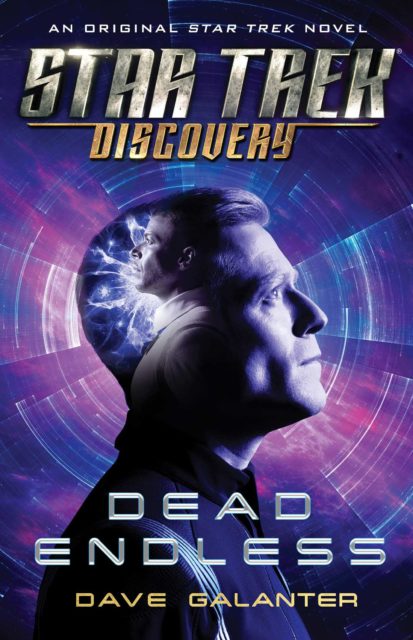
“We’re here, Lieutenant. Is anyone injured?”
“No, though Tilly is close to having kittens.” Bryce’s voice was unruffled but sounded forced. A self-imposed composure he didn’t truly feel.
A bit more faintly, the captain heard Tilly in the background: “I’m allergic, actually. I mean, I just need a shot and I could have them. Not give birth to them. That would take more than a shot.”
“She’s fine.” Airiam added.
The first fifth or so of this novel was gripping and infuriating for me, in pretty much equal measure. I noticed right off the bat that the book did not begin, as most Trek novels do, with a “Historian’s note,” establishing when the events of the book take place with respect to other Trek stories. So as I tried to piece together when these events were happening, I was stymied.
Tilly was an Ensign, not a Cadet. So, it must take place after season one of Discovery. But Tilly’s roommate seems to be Detmer, not Burnham. And where is Burnham? And there are mentions of “the Captain,” but no indication of whether that means Lorca, Pike, or even Saru. Oh, wait, Saru is the first officer. So who’s the captain? And the USS Glenn is mentioned as a ship that is still in service! But Stamets has tardigrade DNA incorporated into his system – so, what’s going on? Doesn’t this author care about Trek continuity? And Landry is discussed as still being Chief of Security! And there’s NO mention of Dr. Culber or his death! WHAT IS GOING ON?
And then in chapter 5, the Captain appears, and it’s… Michael Burnham. And the hints that Galanter have been dropping that we are not in the Prime Trek universe suddenly coalesce. He hasn’t been dismissive of Trek canon, he’s been deliberately tweaking it, and to powerful effect.
We are in a parallel universe. Not the Mirror Universe, which we do glimpse in this book as well, and probably not the Kelvin Timeline, though I suppose that’s not impossible, but another of the infinite parallel universes that Trek posits exists. Maybe the Riker’s castaway-beard universe? Regardless, the bulk of this book takes place outside the Prime universe, and the only Prime universe character we meet is Dr. Hugh Culber, living undead in the mycelial plane, and slowly going mad.
In this parallel universe, Michael Burnham made a very different choice aboard the USS Shenzhou, trusting her captain instead of mutinying against her, and so that (classified) incident is referred to as “the standoff at the Binary Stars.” Georgiou is still alive and serving as a fleet captain. Burnham has been promoted to captain of Starfleet’s newest science vessel, the USS Discovery, and has brought many of her former Shenzhou crewmates with her. We get to meet a Keyla Detmer with no prosthetics, for instance. And there are other differences too.
Lt. Cdr. Ellen Landry is alive and well, though she is injured in an accident early in the book, and spends some time in sickbay, recovering under Dr. Pollard. When she finally enters the action, she is a delightful character, almost as prickly as the Prime timeline Landry, but more nuanced and well-rounded. When the captain is impressed with the way Landry built a relationship with some formerly hostile aliens, Galanter writes: “The security chief gave her captain a discrete wink. ‘I know more than one way to disarm someone.’” This book left me wanting more Landry. The character is so well-written that I could see and hear Rekha Sharma in my mind’s theater as her story unfolded. And more Rekha Sharma is always a good thing.
The USS Glenn is still active, and Justin Straal is still aboard her. Perhaps most critically, when Paul Stamets and Hugh Culber met, in that café on Alpha Centauri, there was a slight difference in the way they interacted: A Culber who was a little more rude to Stamets than he was in the Prime timeline meant that the two never fell in love, and were never married. “Dead Endless” confirms that the Prime timeline Stamets and Culber were married, something that the episodes only strongly hint at. Memory Alpha calls the two “partners,” and notes that Michael Burnham described Stamets as a “widower” in season two’s “Saints of Imperfection,” but in this book, Culber directly refers to Stamets as his husband.
In the mycelial plane, our Prime timeline Culber interacts with Ephraim, the tardigrade who was called “Ripper” aboard the Prime USS Discovery. Deep cut Trek fans know that in Bryan Fuller’s initial pitch for the show that would become Star Trek: Discovery, “Ephraim” was the name of the giant space tardigrade who served on the bridge. Budget constraints forced Ephraim’s role to be reduced in the version of Discovery that made it to air, but in “Dead Endless,” Ephraim speaks of parallel universes in which he does wear a Starfleet uniform and serve on Discovery’s bridge. Ephraim is a delightful character at first in “Dead Endless,” serving as a sort of guide to Culber as he tries to regain his memory and his sanity, but his constant refrain of, “I did. And I didn’t. And I will. And I won’t” becomes tiresome midway through the book. I’m glad Ephraim is part of the beta-canon Trek-lit universe, though, and I’d love to see more of him.
Galanter handles Tilly very well, and she is fun to read. We learn that the parallel Tilly also wrote a paper on the Elisurians, just as Prime Tilly did in Una McCormack’s excellent novel The Way to the Stars, a fun connection. By the time she cements good relations with a new alien species by leading them in a singalong of “Old MacDonald Had a Farm,” you believe that her appeal crosses the barriers of species and language. And it’s fun to read about a Michael Burnham who is not burdened with the weight of her failures aboard the Shenzhou.
What I didn’t love in Dead Endless is the constant, lingering question posed again and again about Stamets and Culber: If Hugh was married to the Prime-universe Paul, does he have any right to fall in love with this parallel Paul? Or is parallel Paul fated to be married to parallel Hugh? And is Prime Hugh cheating on his husband by kissing parallel Paul? These are interesting questions the first time they are touched on, and the second. But as the story grinds on and focuses more and more on these questions, they begin to feel interminable. The love between two human beings is a great and wonderful thing, but a single human relationship is perhaps too fragile and precious to bear the weight of “destiny” or the fate of the universe. In Trek, or in any other fictional story, that sort of universe-altering importance has to be earned, not just asserted. Romeo has to fall for Juliet. Darcy has to fall for Elizabeth. These stories have had an enormous cultural impact for decades, and even centuries. But does Stamets have to fall for Culber? We’ve only known them for two seasons of TV, and their relationship has barely been explored. I am not convinced that their cultural significance and impact will ever merit the sort of weight that Trek honchos want to put on it. Let it develop. Let’s see where it goes. If it gets there, it gets there. But I don’t think the pressure is healthy.
Fortunately, partway through the second half of the book, the Discovery makes contact with some aliens who have been using spore drive technology for centuries, and the story picks up once true first contact happens. It’s fun to interact with aliens whose technology is so advanced that they debate whether interacting with Starfleet violates THEIR Prime Directive! And it’s fun to see those aliens partner with our crew, eventually willing to share some insights in order to solve their mutual problem together. The USS Glenn is called in as a sort of deus ex machina solution, and everything is eventually restored to the point where it needs to be in order for Culber to be rescued by Prime Stamets in (DSC 205) “Saints of Imperfection.” And parallel Paul contacts parallel Hugh, and the two make a connection that seems to work. And all’s well that ends well.
All in all, Dead Endless has a lot to recommend it. I loved Galanter’s treatment of the supporting characters in the book, especially Landry, Tilly, and Burnham. His first contact scenario is interesting and resolves well. And the opening chapters are maddeningly engaging. Despite my reservations about the universe-bending importance of the marriage of Stamets and Culber, the book is definitely worth picking up.
DISCLAIMER: We may link to products to buy on Amazon in our articles, these links are customized affiliate links that support TrekMovie by earning a small commission when you purchase through the links.


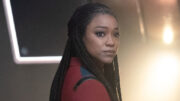
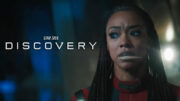
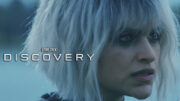
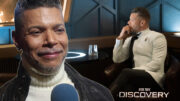
Dave, who I’m friends with from our time together on STNV, always writes from a deep dive perspective.
I’m going out to purchase this book today. I encourage everyone to do the same.
His TOS outing, Troublesome Mind is a worthy read.
Well done, Dave!
I appreciate the support and the criticism. The only point I might make is that all I could draw on for the connection between Culber and Stamets is what I saw on screen, and what I bring to it knowing the relationship I am in makes me (someone who doesn’t believe in destiny) feel like my wife is my soulmate I would never want to be without. My belief in her and in our relationship is as close as my logical brain can get to the concepts of destiny and fate. I am deeply, passionately in love with her as a being who while not perfect (neither am I) is perfect FOR ME. That’s my understanding of “true love” and the point from which I am able to write a love story. Which is what this book really is. :)
You still haven’t signed my Kindle Copy of Troublesome Mind, Dave……
Thanks! :-) Dennis……
Dave, thanks for chiming in! I hear what you are saying about the depth and importance of your marriage in your life – I cannot imagine a world in which I am not married to my wife, either. And we absolutely write out of what we know. But there’s a difference between how I feel about my relationship with my wife and how “the universe” or “destiny” or “fate” feels about our relationship.
But your point is well taken – it is believable that Culber and Stamets would wrestle in this way with the questions they wrestle with.
Being the structure of Star Trek: Discovery so different from that of the previous series, the books do not seem attractive to me. It is similar to the Lost books. Everything interesting in the series could not appear in these novels. Instead, one enjoyed an adventure or novelization of Voyager or TNG while getting to know the characters. I prefer a thousand times the extended universe of Destiny and later.
I’d encourage you to reconsider. I had the same concerns. I was pleasantly surprised at DSC books.
I’ve enjoyed the new books, but not overall to the same extent as the Relaunch books.
I’m definitely not rushing out to buy the new books, but have been preordering the Relaunch novels. If a good review or word of mouth convinces me, I’ll try the new books, but they aren’t the same product.
What do I mean by different product?
The Relaunch books were able to advance the story. The writers under S & S editorial leadership became a writers room. The overall story advanced, characters grew, evolved and faced consequences.
Previously, Trek books in the 90s and early 00s had to observe the rule that ‘all the toys had to go back into the toolbox the way they came out’. I kept trying the books but never found them compelling.
Starting with the DS9 books relaunch, the world of Star Trek was allowed to grow and change. In general the quality of the books improved, and over time it seemed that S & S found and held onto some really solid to great writers. I found myself coming back to Trek books again and again.
So far, S & S has held on to its better Trek writers with the new books, and the behind-the-scenes coordination with the writers room has allowed for some creative space. However, it’s clear that the writers are working hard to find something fresh within the box that tying-in to the shows prescribe. These books don’t make me wonder where the long term story arcs will go.
It sounds as though Dave Gallanter has used the many worlds theory multiverse of Trek to provide an innovative way to find out more about the Discovery characters, especially Stamets and Culber. So, it’s likely one I’ll pick up. But again, it’s a case-by-case decision.
In the meantime, I’m rereading the Relaunch novels, and working through some of the sub-series that I hadn’t got to before.
It sounds as though S & S and TPTB have some things to work out to make the novels viable. On one hand, the long arcs of the Relaunch books may have narrowed their audience as time went on and the investment to enter the story increased. On the other, the more limited creative scope of the new books may reduce their viability and the ability to retain the better writers, especially as Discovery has already contradicted the earliest of the new books.
Last thought, as I’ve mentioned previously, the Relaunch books offer an incredibly rich resource of stories that respect continuity and that could be brought to the screen. They could be adapted to fit into the evolving new canon of the Prime Universe on-screen, or offered as another timeline. Some of them (e.g. the Vanguard series in the TOS era) could be recast, others could use modern high-quality animation for adults.
I’m about 1/4 in (and did not read the entire spoiler filled review). Love the character interplay but the vagueness of the “alt universe”/“What if?” setting is very distracting, given that the other Discovery novels were all ‘prime’. Even people who write fanfic provide a ‘grounding’ so you understand the context.
I am looking forward to read it during hollidays. :-) I preordered it and I really enjoyed the other Discovery books. :-)